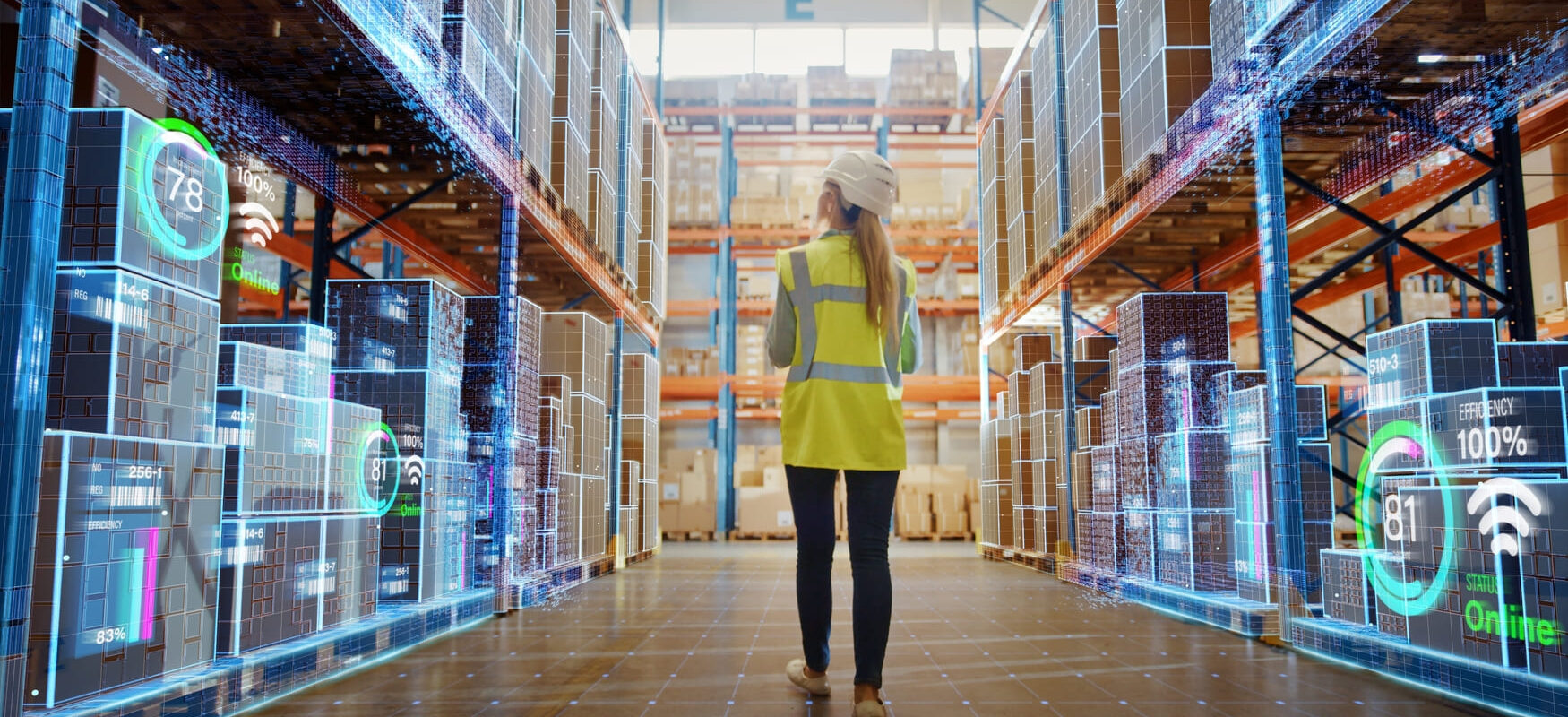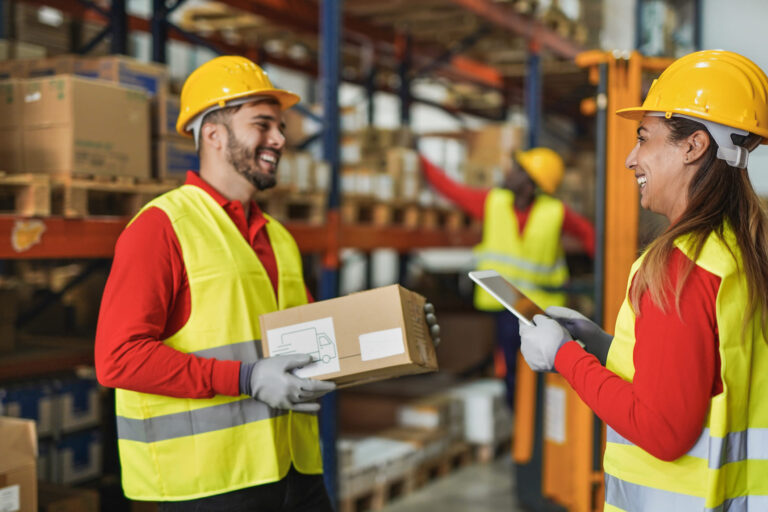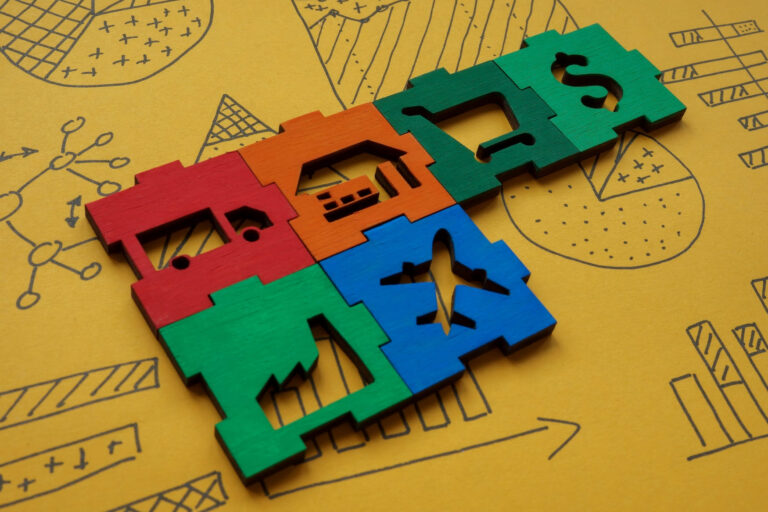Retail Logistics Solutions: Key Strategies for Retailers

Retail logistics is often described as the backbone of a seamless customer experience. In practice, retail logistics covers every step of getting products from manufacturers or suppliers into store shelves or directly into customers’ hands. It includes transportation, warehousing, inventory management, order fulfillment, and delivery, ensuring the right products are in the right place at the right time. Efficient retail logistics lets retailers keep inventory costs low while processing and delivering orders quickly. In short, efficient retail logistics and distribution operations help retailers stay competitive and keep customers happy.
Key Components of Retail Logistics
Retail logistics comprises several core functions. Optimizing these components is key to seamless logistics for retail businesses
- Inventory Management: Tracking stock levels to meet customer demand without overstocking. Preventing stockouts (running out of products) and overstock situations is critical to control costs.
- Warehousing & Retail Fulfillment: Storing goods in fulfillment or distribution centers until they’re needed. Effective retail warehousing services position inventory near demand centers (e.g. urban hubs or stores) for fast replenishment. Warehousing strategies (long-term bulk storage vs. short-term surge capacity) give retailers flexibility to handle seasonal or promotional spikes.
- Transportation & Distribution: Moving products through the supply chain, from suppliers to warehouses, then to retail stores or customers. Efficient routing and full truckloads help lower shipping costs and speed up delivery. The distribution network (including transport carriers and cross-docking points) ensures products flow from manufacturers to warehouses, then to retail stores or directly to customers.
- Order Fulfillment: Handling customer orders quickly and accurately (picking, packing, and shipping). Fast and reliable fulfillment is crucial for profitability and loyalty.
- Last-Mile Delivery: The final leg from a store or warehouse to the customer’s door. Today’s consumers expect speedy last-mile delivery, so optimizing this step can turn fast shipping into a competitive advantage.
- Returns (Reverse Logistics): Managing returned merchandise efficiently. Since returns are inevitable in retail, having a clear process for returns and restocking is vital to maintain customer satisfaction.
By implementing data-driven strategies and using modern management software (WMS/WES), retailers optimize these components. For example, real-time inventory systems track stock levels and help avoid costly stockouts or excess inventory. Overall, blending planning, technology, and expert management keeps the retail logistics chain running smoothly.
Retail Logistics Strategies and Solutions
Retailers use a variety of strategies and solutions to strengthen logistics for retail operations:
- Partnering with Third-Party Logistics (3PL) Providers: Many retailers outsource warehousing, fulfillment, and shipping to specialist 3PL companies. Top 3PL providers (e.g. DHL, XPO Logistics, Schneider) offer wide networks of warehouses and carriers. This outsourcing provides cost savings (no need to invest in facilities or equipment) and scalability for peak seasons. Leading retail logistics companies invest in technology (advanced WMS, tracking) and expertise, letting retailers focus on core business.
- Omnichannel Logistics: Modern retail blends brick-and-mortar and e-commerce. Effective retail logistics solutions integrate all channels: for example, using store inventory to fulfill online orders (“ship-from-store”) or direct shipping from suppliers (drop-shipping). Unified inventory and order management systems ensure stock is allocated correctly between online and in-store sales. Logistics plans also cover returns from any channel, using automated return labels and centralized centers to streamline reverse flows. A unified omnichannel logistics strategy ensures customers get the same service whether shopping online or in person.
- Advanced Technology and Automation: Technology is transforming retail supply chains. Retailers are using AI, machine learning, and IoT devices to enhance logistics. For example, predictive analytics improve demand forecasting and inventory planning, while AI-driven software optimizes routing to reduce shipping costs and delivery times. IoT sensors and RFID tags give real-time visibility: every carton or pallet can be tracked automatically through the warehouse and distribution network. Many retailers now use RFID tags on merchandise to automate receiving and inventory counts, speeding up warehouse operations and improving accuracy. Robotics and automation (robotic pickers, automated sorters) further boost warehouse speed and reduce labor needs. These innovations help retailers manage large item varieties and high order volumes efficiently.
- Data-Driven Planning: Retail logistics solutions often include analytics for inventory optimization. Retailers leverage sales data and forecasting models to plan stock levels and replenishment schedules. This minimizes stockouts (lost sales) and excess inventory. Demand forecasting also informs sourcing decisions and transport planning. For example, by predicting seasonal spikes, a retailer can pre-position goods in strategic warehouses to reduce lead times. These data-driven strategies make retail logistics more agile and responsive.
- Sustainability and Efficiency: An increasing focus is on green logistics. Retailers adopt solutions like route optimization (to cut fuel use), recyclable packaging, and electric delivery vehicles to reduce carbon footprint and costs. Sustainable practices in logistics are not only eco-friendly but can also be cost-effective, improving brand image and meeting customer demand for “green” operations.
Technology and innovation play a big role in modern retail logistics. Advanced Warehouse Management Systems, real-time tracking platforms, and AI-powered analytics make the supply chain smarter and faster. For instance, IoT sensors and RFID tags on products enable real-time visibility and automated inventory audits. Retailers also use mobile apps and dashboards to monitor shipments and warehouse status. By adopting these solutions, retailers can improve accuracy, reduce labor, and deliver a seamless omnichannel experience.
Challenges in Retail Logistics
Retail logistics faces many challenges in today’s global market. Key obstacles include:
- Supply Chain Disruptions: Events like natural disasters, trade disputes, or pandemics can interrupt supplies. These disruptions make it difficult to maintain steady inventory flow. Retailers must build contingency plans and flexible sourcing to adapt.
- Demand Forecasting: Predicting sales is notoriously hard. Underestimating demand leads to stockouts, while overestimating leads to excess inventory. Both scenarios hurt profits. Inaccurate forecasts require advanced analytics and real-time data to mitigate.
- Omnichannel Complexity: Tracking inventory across online stores, physical outlets, and third-party channels complicates fulfillment. Retailers must synchronize stock data across multiple systems to avoid overselling or deadstock.
- Speed Expectations: Customers now expect fast (often same- or two-day) delivery. Competing with giants like Amazon means high shipping speed and low cost, which puts pressure on margins.
- Cybersecurity and Data Privacy: Retail logistics relies on information systems for orders and tracking. Protecting customer data and supply chain information from cyber threats is critical.
- Reverse Logistics: Efficiently handling returns is a challenge. Returned items need inspection, restocking, or disposal.
Overcoming these challenges often involves using data (for forecasting), building resilient partnerships (for supply continuity), and designing flexible networks. Companies that embrace these solutions will have more agile and reliable logistics.
Partnering with OLIMP Warehousing
For retailers seeking reliable logistics support, OLIMP Warehousing offers comprehensive 3PL solutions tailored to retail needs. With nationwide warehouse locations and transportation networks, OLIMP Warehousing can handle your retail distribution, fulfillment, and warehousing. Whether you need long- or short-term storage, climate-controlled facilities, or dedicated e-commerce fulfillment services, OLIMP’s team will customize a solution. By partnering with OLIMP Warehousing, retail businesses in North America gain expert logistics management, from efficient cross-docking and inventory control to fast retail shipments, helping you reduce costs, meet customer expectations, and focus on growing your brand.
Frequently Asked Questions (FAQ) – OLIMP Warehousing
Q: hat does logistics mean in retail?
In retail, logistics covers the full supply chain – transportation, warehousing, inventory, fulfillment, and returns-not just delivery.
Q: What is reverse logistics in retail?
Reverse logistics is the handling of returns, repairs, recycling, or disposal, moving goods back from customers or stores to warehouses or manufacturers.
Q: Who offers the best retail logistics services?
Leading retail logistics providers include global 3PL companies with extensive networks and retail expertise. For example, providers like DHL, XPO Logistics, and Schneider are known for specializing in retail supply chain solutions. These companies offer nationwide warehousing, sophisticated IT systems, and large carrier networks. Small and mid-size retailers also often partner with regional 3PLs or local fulfillment centers. Amazon’s logistics arm is another major player, especially for e-commerce. The “best” provider depends on a retailer’s needs – factors include coverage, technology, service level and cost.
Q: How have retailers used RFID technology in logistics?
Retailers use RFID tags to track inventory in real time, speed up receiving and picking, reduce errors, and keep shelves stocked.
Q: Does “logistics” just mean delivery in retail?
No. Delivery is only one part of retail logistics, which also includes inventory management, warehousing, fulfillment, and returns.
You may be interested in

Food & Beverage Logistics: Supply Chain, Warehousing & Transportation Guide
Food and beverage logistics covers everything from processing and packaging to shipping and delivery of perishable goods. It is essentially the movement of food products from origin (farm or factory) to consumers. In 2025, this industry fuels a global market worth over $9 trillion, so optimizing the food & beverage supply chain is critical. Key […]

Guide to Choosing the Right Fulfillment Partner
What Is a Fulfillment Partner? A fulfillment partner (often a 3PL or fulfillment company) is a specialist third-party logistics provider that manages the entire order process on behalf of an online retailer. In practice, a fulfillment partner receives and stores your inventory in its warehouse, then picks, packs, and ships customer orders as they come […]

Finding Reliable Freight Carriers and 3PL Partners: A Down-to-Earth Guide
Struggling to get your products to market on time and on budget? You’re not alone. Small businesses, freight brokers, logistics managers, and e-commerce companies across the U.S. often feel the pain of finding a reliable freight carrier or third-party logistics (3PL) partner. In an industry where trucks move over 70% of U.S. freight , even […]
Ready to streamline your warehousing needs?
Request a quote today and discover how OLIMP's tailored solutions can optimize your operations